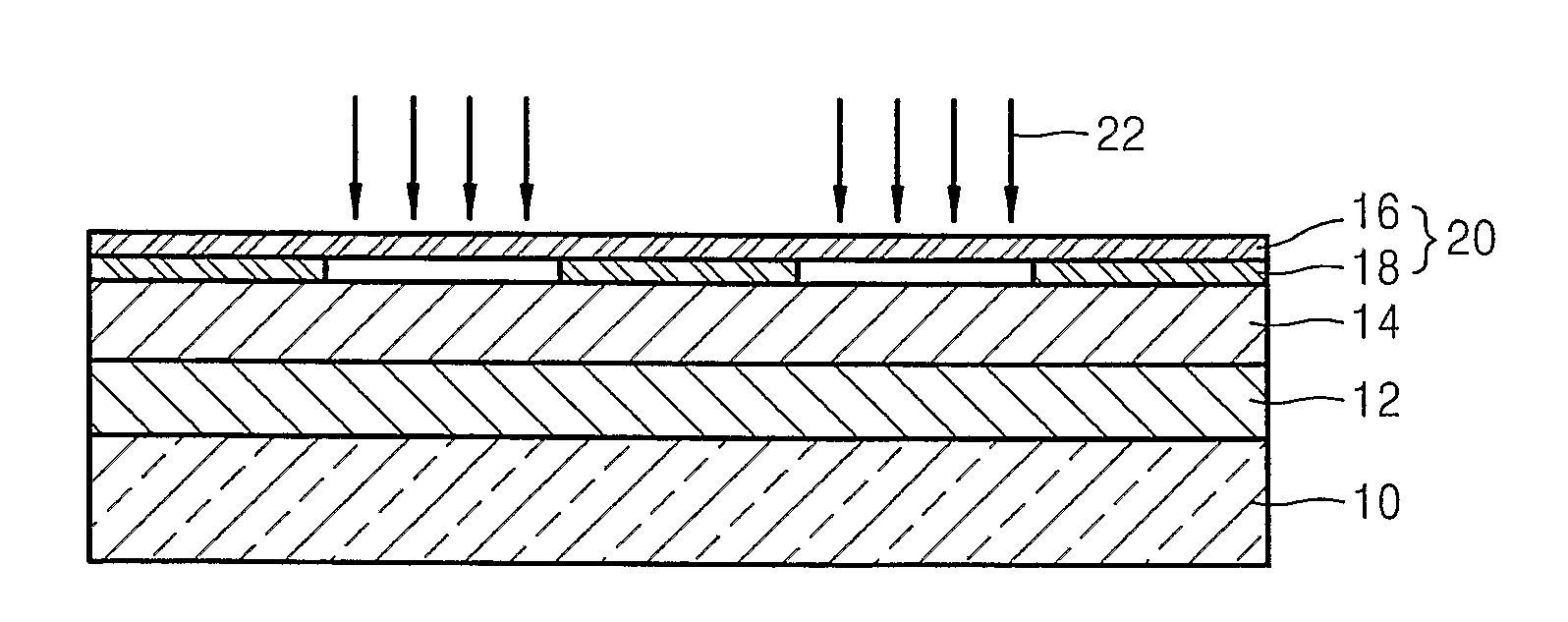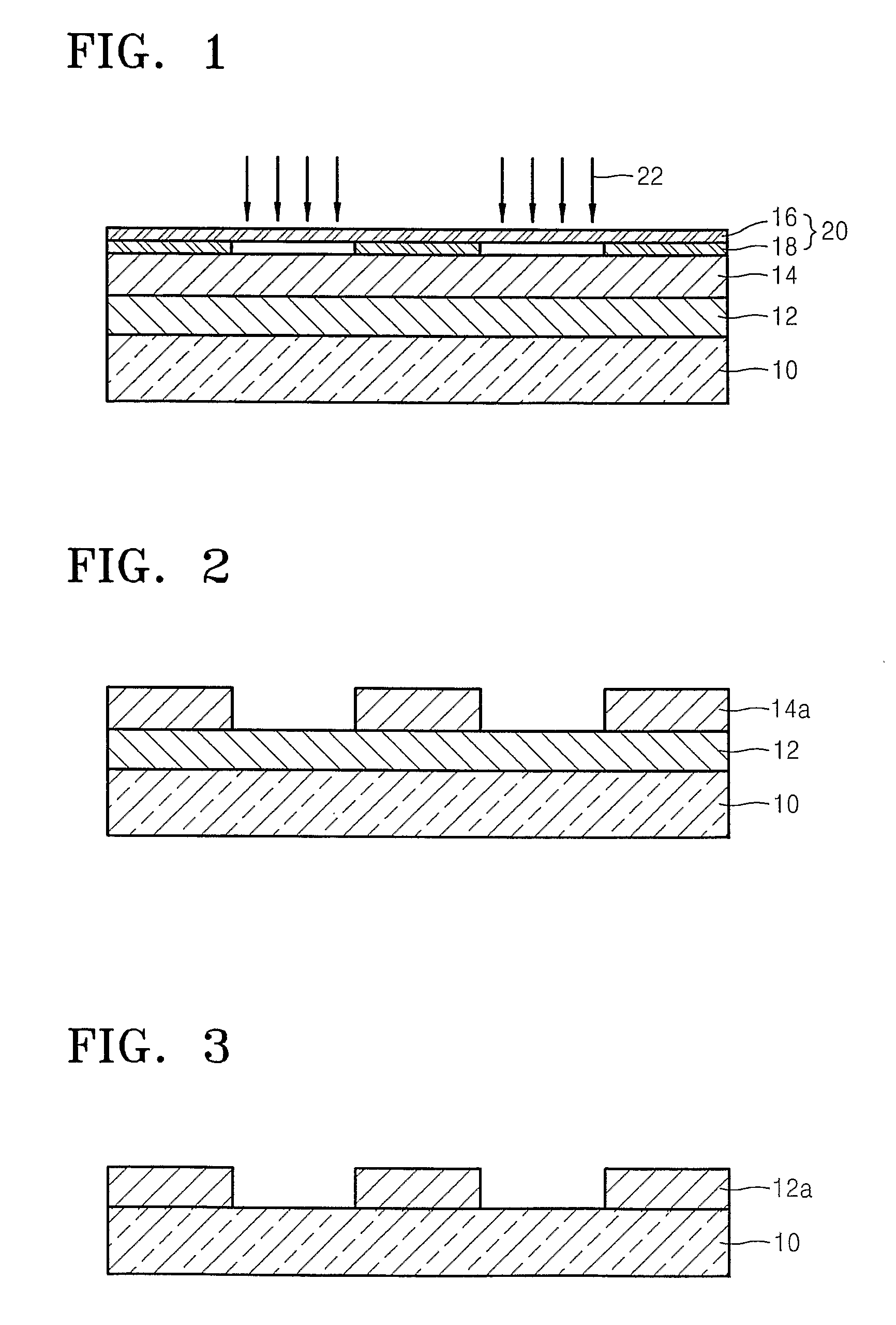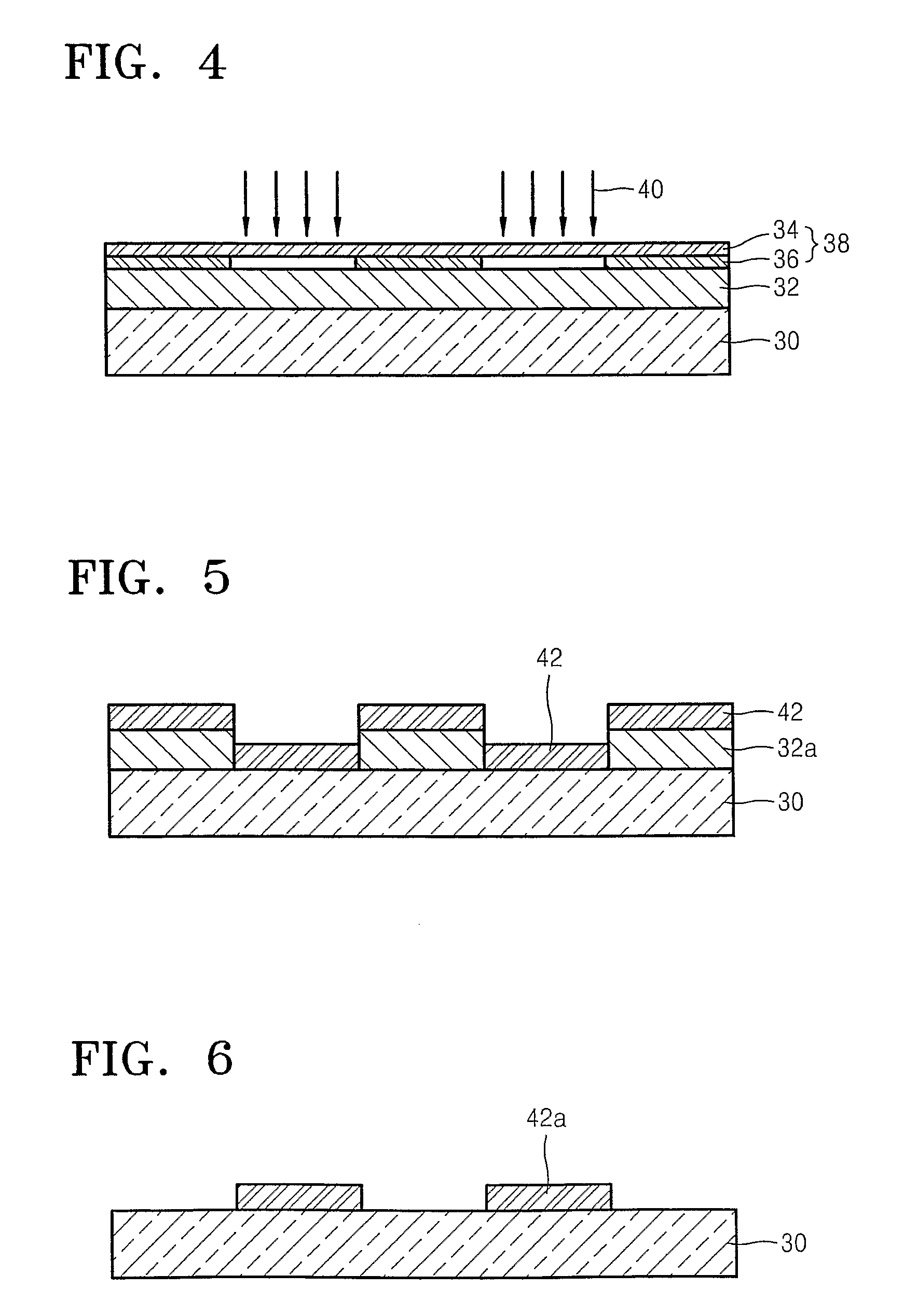Method of synthesizing ITO electron-beam resist and method of forming ITO pattern using the same
a technology of electron beam and indium tin oxide, which is applied in the direction of liquid/solution decomposition chemical coating, instruments, photosensitive materials, etc., can solve the problems of low throughput, inadequacies of wet etching methods for forming nano-scale fine patterns, and contaminating etching baths with exfoliated photoresist patterns, etc., to achieve high optical transmittance and low resistivity
- Summary
- Abstract
- Description
- Claims
- Application Information
AI Technical Summary
Benefits of technology
Problems solved by technology
Method used
Image
Examples
Embodiment Construction
[0032]The present invention will now be described more fully with reference to the accompanying drawings in which exemplary embodiments of the invention are shown. The invention may, however, be embodied in many different forms and should not be construed as being limited to the embodiments set forth herein; rather, these embodiments are provided so that this disclosure will be thorough and complete, and will fully convey the concept of the invention to those skilled in the art. In the drawings, the thicknesses of layers and regions are exaggerated for clarity.
[0033]As described above, in order to address conventional problems caused during forming of an ITO pattern, the present invention does not use a photoresist film, but uses an ITO electron beam resist that reacts with an electron beam. A method of synthesizing the ITO electron beam resist will now be described.
[0034]FIG. 7 is a flow chart for explaining a method of synthesizing an ITO electron beam resist according to the pres...
PUM
| Property | Measurement | Unit |
|---|---|---|
| molar ratio | aaaaa | aaaaa |
| size | aaaaa | aaaaa |
| temperature | aaaaa | aaaaa |
Abstract
Description
Claims
Application Information
 Login to View More
Login to View More - R&D
- Intellectual Property
- Life Sciences
- Materials
- Tech Scout
- Unparalleled Data Quality
- Higher Quality Content
- 60% Fewer Hallucinations
Browse by: Latest US Patents, China's latest patents, Technical Efficacy Thesaurus, Application Domain, Technology Topic, Popular Technical Reports.
© 2025 PatSnap. All rights reserved.Legal|Privacy policy|Modern Slavery Act Transparency Statement|Sitemap|About US| Contact US: help@patsnap.com



